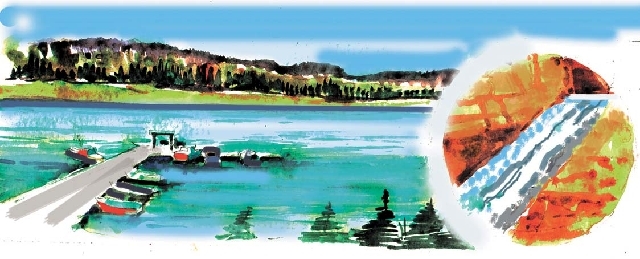Navajo Lake an alpine jewel in Southern Utah

In summer and fall, the high country east of Cedar City, Utah, easily accessible for Southern Nevadans, offers cooler temperatures, splendid scenery and ample outdoor recreation opportunities.
Cedar City is about a three-hour drive from Las Vegas. Follow Interstate 15 north into Utah. In Cedar City, exit the freeway onto Main Street. Watch for the downtown turnoff onto Highway 14. The road heads east and climbs to the high, forested Markagunt Plateau, a playground for campers, hikers, fishermen, mountain bikers, horseback riders and other outdoor enthusiasts.
About 25 miles up Highway 14, the road passes by an alpine jewel, Navajo Lake. Formed when ancient lava flows dammed drainage in a narrow valley, Navajo Lake is almost three miles wide and half a mile long. A man-made dam at one end keeps the shallow lake from disappearing in years of drought. Pause at the highway turnout to enjoy serene views of the lake and surrounding forest. Beyond the viewpoint, Navajo Lake Road takes visitors to private lodgings, boat docks, two Dixie National Forest campgrounds and several trailheads connecting a network of backcountry trails.
Rustic Navajo Lake Lodge has been renting cabins to tourists since 1927. Now for sale, the property sits on the south shore of the lake near boat docks where rental watercraft are available. Eleven cabins with kitchenettes come furnished with bedding, towels and kitchenware. View the cabins online at navajolakelodge.com. Call 702-646-4197 for rates and reservations.
For those who prefer to camp, sites are available in the national forest near the lakeshore west of the lodge at Navajo Lake Campground and overlooking the lake a few more miles to the west at Te-Ah Campground. Sites are available on a first-come basis. For best site selection at these popular campgrounds, plan for early arrival on weekends or visit midweek.
Navajo Lake Campground contains 12 single sites, four doubles and 11 walk-in tent sites. It is open from Labor Day until late fall. Te-Ah Campground contains 41 single sites open from Memorial Day until Labor Day. Campers pay $15 per night for the singles, $30 for doubles and $12 for walk-ins. Expect to pay $3 for day use. Both facilities have restrooms and drinking water. A half-mile trail leads from Te-Ah Campground to a viewpoint at the edge of the plateau and access to longer trails.
One of the area’s lesser-known attractions lies not far south of Navajo Lake. Geologically unique, lovely Cascade Falls is a natural outlet for the waters of Navajo Lake. The water emerges from a cave system through lava tubes and the soluble limestone and marl of the Claron Formation atop the plateau. This formation’s edge is revealed in the vivid pink cliffs overlooking Zion National Park and in the colorful formations at Cedar Breaks National Monument and Bryce Canyon National Park.
Cascade Falls is either a trickle or a torrent depending on precipitation on the plateau. It catches the runoff from the lake and other natural drainage in a sinkhole below the dam, funneling it more than a mile through tubes and caverns until it emerges just below the rim and froths down the steep slopes. This water is the source of the North Fork of the Virgin River, which flows through Zion Canyon.
To reach the falls from Highway 14, follow Navajo Lake Road one-quarter of a mile to a fork. Going right at the fork leads to the lodge and lakeshore. Take a left at the fork, onto Forest Road 054, and stay right at the junction with another forest road from Duck Creek. Drive three miles around the end of a dry lake to an overlook and parking area. Trailheads at this site offer many hiking choices. The trail to Cascade Falls runs six-tenths of a mile to a wooden observation platform. A series of steps assists hikers on steep portions. The views are gorgeous.
Margo Bartlett Pesek’s Trip of the Week column appears on Sundays.